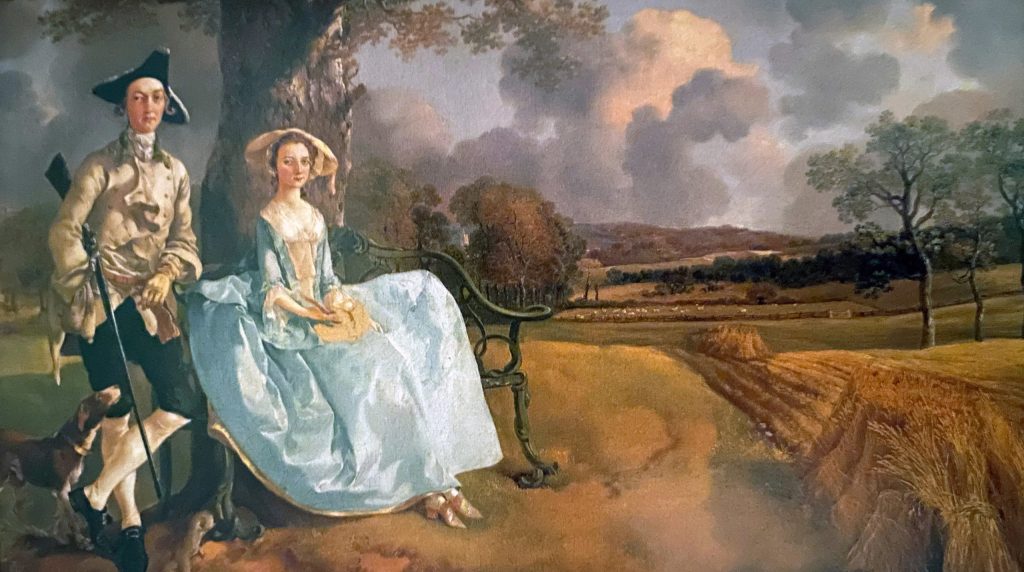The Mastery of Thomas Gainsborough: A Journey Through His Artworks
Thomas Gainsborough, one of the most prominent British painters of the 18th century, is celebrated for his remarkable ability to capture the essence of his subjects through portraiture and landscape painting. His unique style and innovative techniques have cemented his legacy in the art world, making his works timeless treasures. This article explores Gainsborough’s significant contributions to art, with a special focus on his renowned painting, “The Blue Boy” artwork.
Early Life and Artistic Beginnings
Thomas Gainsborough was born on May 14, 1727, in Sudbury, Suffolk, England. From a young age, he demonstrated an extraordinary talent for drawing and painting. Encouraged by his father, a cloth merchant, and his mother, who had an appreciation for the arts, Gainsborough’s artistic inclinations were nurtured. At the age of 13, he was sent to London to study art under the tutelage of French engraver Hubert Gravelot and later at the St Martin’s Lane Academy. These formative years were crucial in shaping his artistic vision and technique.
Portraiture: Capturing the Aristocracy
Gainsborough’s skill in portraiture quickly earned him a reputation among the British aristocracy. His ability to depict the subtleties of character and emotion in his subjects set him apart from his contemporaries. One of his earliest successes was the portrait of Mary, Countess Howe, which showcased his talent for rendering delicate textures and lifelike expressions. This work, along with many others, solidified his status as a leading portraitist of his time.
Gainsborough’s portraits are characterized by their fluid brushwork and the use of light to create a sense of immediacy and intimacy. He often painted his subjects in relaxed, natural poses, which contrasted with the more formal and rigid portraits of the period. His works such as “The Morning Walk” and “Portrait of Mrs. Sarah Siddons” exemplify his innovative approach to portrait painting.
Landscape Painting: Nature’s Beauty
In addition to his portraiture, Gainsborough had a deep affinity for landscape painting. He was greatly influenced by the works of Dutch landscape artists such as Jacob van Ruisdael and Meindert Hobbema. Gainsborough’s landscapes are distinguished by their poetic quality and his ability to convey the atmosphere and mood of the countryside.
His landscapes often feature serene, pastoral scenes with rolling hills, meandering rivers, and lush foliage. One of his most famous landscapes, “Mr. and Mrs. Andrews,” not only captures the likeness of the sitters but also the idyllic English countryside in which they lived. This painting is a testament to Gainsborough’s skill in blending portraiture with landscape, creating a harmonious and cohesive composition.
Innovations and Techniques
Gainsborough was known for his experimental approach to painting. He frequently used unconventional materials and techniques to achieve his desired effects. One such innovation was his use of a long-handled brush, which allowed him to paint with greater freedom and spontaneity. He also employed the technique of “laying-in,” where he would block in the basic shapes and colors of a painting before adding finer details. This method gave his works a fresh and lively appearance.
His use of color was also groundbreaking. Gainsborough often used a limited palette, relying on subtle variations in hue and tone to create depth and dimension. His mastery of light and shadow is evident in many of his works, where he skillfully used chiaroscuro to highlight his subjects and create a sense of volume and form.
The Blue Boy Artwork
Among Gainsborough’s most famous and iconic paintings is “The Blue Boy” artwork. This masterpiece, created around 1770, is a stunning example of his portraiture skills. The painting depicts a young boy dressed in a blue satin suit, standing confidently against a dramatic landscape backdrop. The striking use of color, particularly the vibrant blue of the boy’s attire, showcases Gainsborough’s ability to manipulate color to create a powerful visual impact. “The Blue Boy” artwork remains one of the most celebrated works in art history and is a testament to Gainsborough’s exceptional talent.
Later Years and Legacy
In his later years, Gainsborough continued to produce remarkable works that solidified his reputation as one of the greatest artists of his time. His move to London in 1774 allowed him to gain more significant commissions and further expand his influence. Despite his success, Gainsborough remained humble and dedicated to his craft. He often expressed a desire to spend more time painting landscapes, which he considered his true passion.
Gainsborough’s influence extended beyond his lifetime. His innovative techniques and distinctive style left a lasting impact on the art world. His works are held in high esteem in major art institutions around the globe, including the National Gallery in London and the Louvre in Paris. Artists who followed in his footsteps drew inspiration from his approach to both portraiture and landscape painting.
Conclusion
Thomas Gainsborough’s body of work is a testament to his extraordinary talent and enduring influence on the world of art. His ability to capture the essence of his subjects, whether through the delicate features of a portrait or the serene beauty of a landscape, continues to captivate audiences today. Gainsborough’s legacy is one of innovation, mastery, and a deep appreciation for the beauty of the natural world. As we reflect on his contributions to art, it is clear that his works will continue to inspire and delight for generations to come.

